Monitors & Monitoring Tutorial
Monitors are one of the most crucial components of any studio, so it’s vital that an engineer understands every aspect of them. John Pickford shares the knowledge.
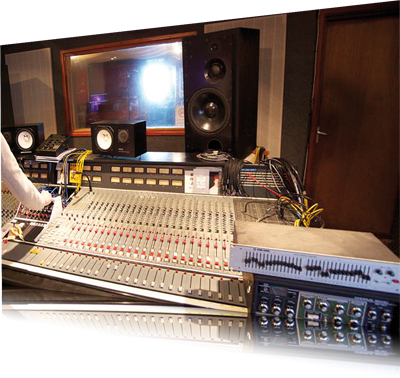

Full-Range Monitors
Sometimes referred to as main monitors, all professional recording studios, mixing suites and mastering facilities are equipped with at least one pair of full-range monitors. These are usually very large and contain several drive units, more often than not with separate, dedicated drivers designed to handle bass, midrange and high-frequency reproduction. Full-range monitors are able to cover the entire frequency range, from the deepest bass (which can be felt as well as heard) right up to super-high frequencies that are inaudible to human ears. Capable of performing at very high SPLs, this type of monitor is often situated several metres from the listening position, so it’s vital that they integrate well with the room in which they are used. Some studios build theirs into the far wall of the control room.
Nearfield Monitors
Often used as alternative speakers to the main full-range monitors in large studios, nearfields are also the first choice of main monitor in smaller project and home studios. Usually no bigger than an average domestic hi-fi speaker, modern nearfield monitors can give a much more faithful account of how your recording will sound over home stereo systems. Because these monitors are normally situated quite close to the engineer’s ears, the influence that the room has on the overall sound is reduced by comparison to full-range monitors. Many engineers will choose to mix through nearfields these days, saving the full-range monitors for occasional loud playbacks and more accurate assessment of deep bass response.
Headphones
Musicians wear headphones in the studio to monitor their performances, and they are essential in order to hear previously recorded tracks while overdubbing. Engineers also find them useful to check stereo balance, although it’s unusual – and not really advisable – to mix down through headphones alone. They are also useful for pin-pointing faults such as hiss or hum without subjecting others present at the session to the process. Most studio headphones are large, closed-back designs rather than the in-ear types favoured by the iPod generation.
Domestic And Car Speakers
Studio monitors are designed to be accurate across the audio spectrum, whereas hi-fi and in-car systems are more inclined to flatter a recording. Accuracy is important to achieve a good sound-balance and tone, especially when recording acoustic-based (as opposed to electronic) music. However, many producers of pop, rock and dance music like to use monitors that are tuned to sound more like domestic speakers. It’s common practice nowadays to run off a CD-R of a final mix to play in a car, giving an idea of what it might sound like over the radio.
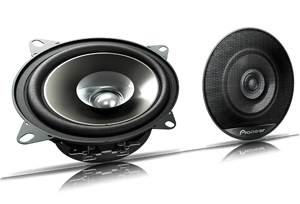
Low-Grade Monitors
Although not as common these days, many studios still make use of an alternative low-grade monitor, traditionally used to hear how a recording might sound on a cheap transistor radio. This type of monitor has a very limited bandwidth, with no top or bottom end and a generally tinny sound. Overly loud or quiet lead vocals can be easily detected by using a low-grade monitor. Auratones (often referred to as horror-tones!) were popular for this purpose and regularly used to monitor sound in television studios. A good alternative today would be to use cheap computer speakers.
Sweet Spot
The listening position, in relation to monitor placement, is crucial in order to hear the best possible sound, with the sweet spot being the place where optimum sound quality is achieved. As a starting point, think of the stereo speakers and your head forming an equilateral triangle, so that if your monitors are positioned, say, two metres apart, the sweet spot will usually be found centrally placed, two metres in front of the monitors. To get it spot-on, it’s a good idea to experiment with the angle of your monitors. Some are designed to fire straight down the room, while others perform better when the speakers are toed-in to point towards your ears.
Off-Axis
Not everyone listens to music glued in the sweet spot. Sometimes it can be useful to listen to your mix off-axis, elsewhere in the room. Even moving to an adjacent room can reveal basic sound-balance problems that may have gone unnoticed, particularly when critically listening to the finer details within a mix in your usual recording and mixing position. Top producer Trevor Horn likes to check his mixes standing at the back of the mixing desk, with the monitors firing into the room in front of him.
Active Monitors
Most ordinary loudspeakers are passive devices that require power from an external amplifier. However, it has become increasingly popular to use active monitors in the studio. These units have bespoke power amplifiers built-in to the cabinet enclosure, often with a dedicated amplifier powering each individual driver. The main benefit of this type of monitoring system (apart from not having to buy a separate amp) is that the amplifiers will have been tailored to suit the speakers, both in terms of power handling and tonal balance.
Amplifiers
If you choose to use passive monitors, a power amplifier will be required to drive them. Generally speaking, small speakers are less efficient than larger ones and require more power. A common mistake when putting together a home recording setup is to blow the budget on expensive monitors, then attempt to drive them from a cheap, low-powered domestic amp. Using an underpowered amplifier will result in poor reproduction and, at high SPLs, will clip and produce a distorted sound. It’s far better to use a powerful amplifier that won’t become stressed when high monitoring levels are required
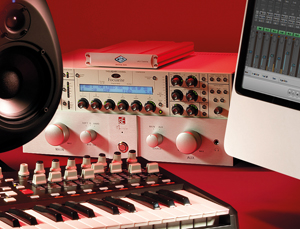
Stands And Supports
In order to get the best possible performance from your monitors it’s important to place them on suitable stands. Simply plonking them on the meter-bridge of a mixing desk or on a rickety shelf will not produce stellar sonic results. Monitors are sensitive to vibrations and will not reveal their full potential unless they are placed on sturdy supports. Speaker cones move back and forth in operation and do not benefit from the cabinet dancing along. Some engineers place spiked cones and other vibration-busting devices underneath their monitors to further isolate them. However, a good pair of stands should provide adequate isolation, with just a small amount of Blu-tack in each corner of the stands’ top-plate to secure the monitors.
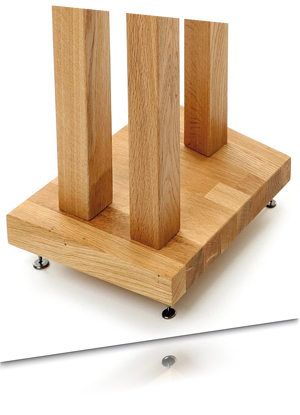
Cabling
Passive monitors receive audio signals from a power amplifier by means of speaker cable. Most cables are made from strands of copper wire (solid-core cables are less common) and range from very thin and inexpensive types suitable for doorbells but not much else right up to thick multi-stranded types costing hundreds of pounds per metre. It’s important that both runs of cable are the same length, regardless of the location of the amplifier in relation to each monitor. The bare wire can be attached directly to the amplifier and speaker terminals or banana plugs can be used for easy connectivity. Active monitors usually accept XLR cables from a preamplifier, with some also featuring phono inputs. Active monitors also require mains power via IEC (kettle) leads.
Woofers
In large, full-range monitor systems the woofer’s job is to reproduce bass frequencies, with separate drivers employed to handle mid and high frequencies. Nearfield monitors are usually two-way designs, with the woofer responsible for both bass and mid frequency reproduction. Woofers feature a diaphragm (speaker cone), traditionally made from paper although nowadays synthetic materials such as woven Kevlar are often used. The cone is attached to a voice-coil and magnet that drives the speaker cone as current from the driving amplifier flows through.
Midrange Speakers
Once referred to as ‘squawkers’, the majority of dedicated midrange speakers are constructed in the same way as woofers, albeit on a smaller scale. Some manufacturers, such as ATC, use dome-type speakers to reproduce frequencies in the 300Hz to 5kHz region. Horn speakers are also employed for midrange duties, though they are more commonly found in PA systems rather than studio environments. Midrange speakers operate in the audio spectrum where most of the sonic action takes place.
Tweeters
Professional high-frequency drivers – tweeters – are capable of reproducing frequencies well above the limits of human hearing. Most tweeters are dome-type speakers, usually made of fabric or very thin but stiff metal. Ribbon tweeters are becoming increasingly popular in modern monitor design, with some very accomplished designs being produced by Elac, among others. Because they are so light, ribbons possess an extremely fast transient response characteristic along with superior high-frequency extension. Some monitors utilise super-tweeters that deal with harmonic content that gives a sense of air and space.
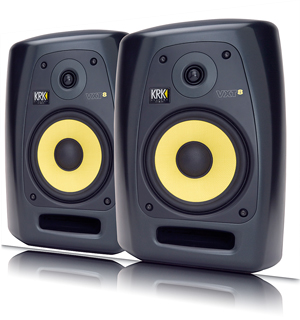 Subwoofers
Subwoofers
Subwoofers are relatively new to the world of monitoring systems, first appearing on the scene in the late 1960s. Designed to augment existing setups and capable of delivering the very lowest frequencies, the first known studio use of subs was during the mixing of Steely Dan’s Pretzel Logic album in 1973. Most full-range monitors do not benefit from the addition of a subwoofer; however, nearfield monitor users often find them indispensable, particularly those producing bass-heavy electronica or similar genres. Professional subwoofers tend to kick in at around 100Hz–200Hz and reach down to 20Hz.
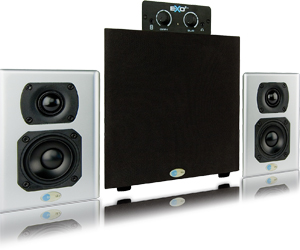
Bass-Reflex Ports
Many monitors, including subwoofers, utilise a bass-reflex port to aid bass extension. Described in the most simplistic terms, the port is a physical hole in the cabinet that is tuned to allow low bass frequencies to escape. Depending on the monitor’s design, the port can be situated at the rear of the cabinet or on the front baffle. Some designs employ two ports, while those that do not make use of bass-reflex port loading are known as sealed-box or infinite-baffle monitors. Although good bass-reflex designs can usefully extend the bottom-end output, some engineers complain of ‘chuffing’ noises heard from the ports of poorly designed monitors.
Coaxial Speakers
In the early days of studio recording, the majority of professional studio monitors were coaxial designs. This type of speaker features a tweeter situated in the centre of the main driver. The idea is to create a point-source, with the sound emanating from a single spot rather than having the tweeter placed above the woofer. Tannoy is arguably the most famous monitor manufacturer to use coaxial drivers, with its Dual Concentric designs gracing dozens of models over the years. See the Studio Icons feature on page 114 for the full story on Tannoy Dual Concentrics.
Surround Sound
The vast majority of studio recording and mixing is performed in stereo; however, with the advent of home theatre systems, recordings that contain front/rear audio information as well as left/right have become increasingly popular. Obviously, extra monitors are needed for these productions and studios equipped to mix in surround sound are much less common than standard stereo studios. Surround sound isn’t a totally new concept, though. Quadraphonic sound was a 1970s phenomenon that failed to take off and now resides in the same graveyard as the eight-track cartridge and the Ford Capri.
Monophonic
It’s quite common during the tracking stage of recording to monitor in mono, with stereo panning saved for the mixing stage. Although stereo recording techniques using two or more microphones is not exactly an uncommon practice, many stereo mixes of pop music are produced from a number of mono signals that are subsequently carefully panned to give a sense of separation and space. It can be useful to collapse your stereo mix to mono in order to check the basic balance and also highlight any phasing issues that may have arisen within the recording.
Familiarity
Regardless of the size, quality or cost of your monitoring system, it’s crucial that you are intimately familiar with its sonic signature. If, for example, your monitors are overly bright, a mix that sounds great coming through them may sound rather dull when replayed on systems with a flatter response. One of the reasons why so many commercial studios possess Yamaha NS10 nearfield monitors is that most jobbing engineers – who very often work in many different studios – know what they sound like, so even if the studio’s main monitors are unfamiliar models, the famous NS10s provide a frame of reference.
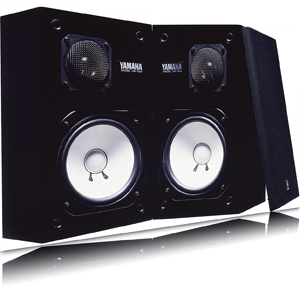
Meters
Whether using a mixing desk or DAW, engineers rely on meters – VU, LED or otherwise – to visually monitor the output of individual channels, sub-groups and the main stereo mix buss. As useful as these are, it’s worth remembering that many great sounds have been created with the meters well into the red, particularly when recording in the analogue domain. Take note of what your meters tell you, but it’s better to mix with your ears rather than your eyes.
PFL And Solo
Most mixing desks feature a Pre-Fade Listen (PFL) and/or Solo switch on each channel. The PFL switch allows an individual audio channel to be monitored before the signal reaches the fader. This is useful when adjusting the input gain. When this switch is engaged all other channels are muted. The Solo switch, sometimes called AFL (After-fade Listen) allows the individual channel to be heard at the level set for the mix. These features are useful for identifying and subsequently dealing with audio imperfections.
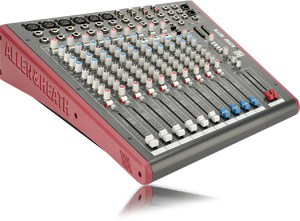 Tone Controls
Tone Controls
Some monitors feature tone controls that allow you to tailor their sound to suit the room in which they’re being used. Usually these controls will boost or cut the output from a specific driver. Bass-reflex-ported monitors sometimes have a switch that reduces the output from the port. This can be useful when rear-ported monitors are sited close to a wall (this increases the perceived bass response). Don’t engage tone controls to flatter your mix: if the sound isn’t right, adjusting the tone of your monitors will make no difference to the true sound of your mix when replayed elsewhere.
Monitoring Level
There are no hard-and-fast rules when it comes to the SPL at which you monitor. Obviously, if you’re recording and mixing a mellow singer/songwriter there’s little point in monitoring at ear-blistering levels. Similarly, if you’re making tracks designed to be played in clubs or you’re recording a heavy metal band, you won’t get a feel for the final result unless you occasionally increase the volume. However, no matter what you are working on, consistently high SPLs can become fatiguing and cloud your judgement.
Recording Monitors
Some sounds can be improved by routing the signal through an external amplifier/speaker and recording the result. This is known as re-amping, and monitors can be used for this technique. The re-amped sound can be used to replace or augment the original. Close-mic’ing the monitors can add punch and drive to previously recorded tracks, while positioning the mic(s) at a distance from the monitors can add room ambience. Echo chambers operate in a similar way, albeit in a more reverberant space.
Here’s some perspective from Monkeyseevideos: